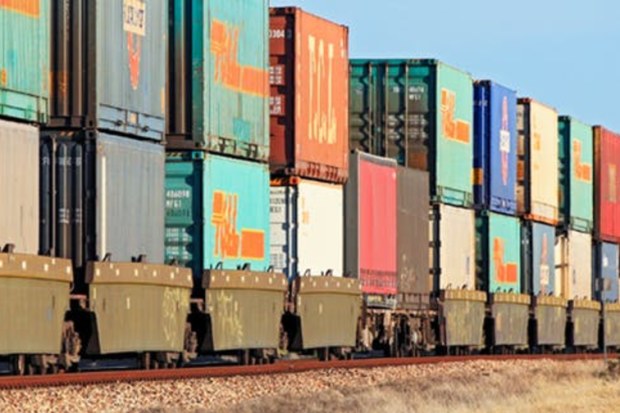[ad_1]
As the Albanese government shows a willingness to scrap big ticket projects put forward by the former government, she reiterated a commitment to high-profile projects including the controversial Inland Rail.
But she said each project would have to demonstrate utility and an appropriate financial benefit before receiving additional funding from the government.
“There’s a lot of sunk costs in that project,” she said of the Inland Rail. “I think it is a really important project, but we have to make sure we’re building it in a way that’s resilient.”
Under review
The 1700-kilometre mega-project linking Melbourne to Brisbane has been beset by delays as discussions continue over its proposed route. A major consultation program is under way across regional communities, some of which will be subject to land buybacks in a bid to accommodate the route.
More recently, construction has been upset by flooding across western NSW, Victoria and Queensland.
She said she had no confidence in the advice that she was initially given on the project, which is what prompted her to appoint former banker and energy policymaker Dr Kerry Schott to review it.
When asked about caps for the cost of the project, she said the government would wait for the return of a report before deciding on potential cost constraints. But she warned the Albanese government would take a “hard-nosed look” at funding for the project.
“If we get this right, in particular the hub around Parkes, I think will be really central to the way in which freight moves around the country. But we’ve got to get this right and I had absolutely frankly no confidence in the advice that I was being given as to when this project was going to be completed and how much it was gonna cost and how to resolve some of the problems,” she said.

The Inland Rail project is expected to cost $14 billion.
“So Kerry’s got a big job to do.”
When asked about the Andrews’ government’s Victorian Suburban Rail Loop which has a 30-year development timeline, she said the government remained committed to the $125 billion project. She also emphatically denied her support had anything to do with the upcoming Victorian election on Saturday.
“I’m pretty confident that that project is … right for investment. It does obviously need some further work from infrastructure Australia and the Commonwealth before we make any further decisions about investment. But I think those early works, which have already started, I think, are a smart investment,” she said, calling it a “transformational” project.
She compared the project to Perth’s Metronet rail system which was opening up new suburbs for development.
“What they’re doing with Metronet is actually establishing new suburbs, new retail hubs, new recreation and aquatic centres around those train stations … And if you look at suburban rail, that is exactly what it’s trying to do.”
Challenges along the road
Deloitte infrastructure boss Luke Houghton, who serves as global lead partner of the consultancy’s infrastructure and capital markets business, lifted the lid on the complex challenges infrastructure providers and developers were facing.
He described the sector as “very much in a time of flux” and said difficult market conditions would prompt service providers to collaborate and consider alternative models of investment and service delivery.
Demand for new projects is through the roof at a time when global supply chains for materials face delays, shortages and interruptions. A tight labour market is pushing up costs and starving projects of critical skills and workers, while economic factors including rising interest rates and borrowing costs are also putting more pressure on projects.
“These tough conditions are the perfect environment to push us outside our comfort zones,” he said.
“We need to look at alternative service delivery models. Companies need to be more creative to consider how to drive the best outcomes … we need to be smarter. And this is made possible through innovation and technology.”
[ad_2]
Source link








